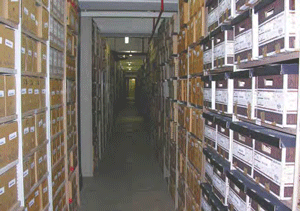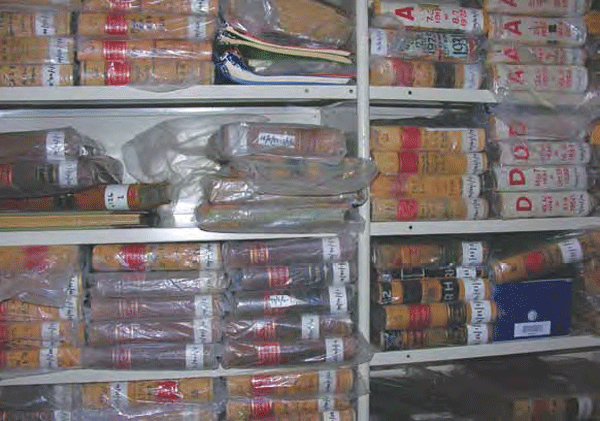Report blasts Victorian record-keeping quagmire

The inability of former wards of the state of Victoria to access their historical records has resulted in an official report to parliament from the state Ombudsman criticising the record-keeping practices at the Victorian Department of Human Services.
However, with over 80 linear kilometres of paper-based records held in archive boxes at internal and external facilities, the department has rejected the Ombudsman’s recommendation to digitise its massive store of paper records, claiming the “significant cost” was prohibitive and many records contained “within bound handwritten registers are unsuitable for digitisation.”
After receiving a complaint in July 2011 from a former ward of the state who said there were many records held in boxes that had not been formally identified or catalogued, the Victorian Ombudsman undertook a formal investigation.
Wards of the state are children either in the direct care of the state or placed or funded by the state in private institutions. The Ombudsman estimates there may have been at least 130,000 children kept as wards of the state over the past 150 years.
“Despite having had the majority of these records in its archives for over 15 years the department has only indexed and catalogued records relating to 26 of the 150 plus years’ worth of records relating to wards and institutions it holds. The majority of these records remain in large part uninspected, unindexed and unscanned,” the report found.
“The department is paying nearly $A1 million a year to rent a facility that has been identified as being inadequate to store records, and has been subject to flooding and rat infestation.
“The department’s efforts to come to grips with its vast archive of documents have been piecemeal and ultimately unsuccessful.
“My investigation identified one example where a collection that had been in the department’s archives since 1990 had only recently been identified as containing numerous references to former wards. This collection of 48 boxes, which was thought to have contained only administration files, had been marked for destruction.
“In just the first six boxes of this collection that have been examined to date, 2,744 references to individual wards and seven documents relating to the alleged abuse of wards have already been identified. Another collection of 100 boxes of records discovered by the department in 2008, thought to relate to former wards and institutions, is yet to be examined due to resourcing issues.
“My investigation identified that there are likely to be other similar collections amongst the large percentage of historical records held by the department that are yet to be properly identified and indexed. All the while former wards searching for these records are likely to have been told that they cannot be found or do not exist.”
The department receives around 1,200 requests a year from former wards of the state and adoptees wishing to access records relating to their time in care.
“Requests to the department for access to records are often not met because records are unable to be found. Some of these requests are made in urgent circumstances. An internal departmental report noted that in the three years prior to May 2011 approximately 21 per cent of all searches for records relating to Freedom of Information requests for former ward and adoption records resulted in no documents being located. In addition, many requests return minimal documentation relating to wards who were in the care of the state for many years, indicating that not all the relevant documents originally created have been found.”
The Ombudsman pointed out that under Victoria’s Public Records Ac “[L]egal discovery should not be impeded by poor document organisation making things hard to find. Documents should not become unavailable by virtue of being “lost in the system”.
Also, “The Evidence (Document Unavailability) Act 2006 reinforces the concept that it is every organisation’s responsibility to have document management systems sufficient to the task of locating and providing evidence in litigation, and that inadequate document retention policies or document classification will not excuse the unavailability of documents in court”
 “the Ombudsman’s investigation also “identified that the department’s failure to adequately inspect, audit and index the historical records in its collection is also having an effect on its destruction schedules. A senior staff member of the department’s Information & Records Services estimated that approximately 40 per cent of the records currently held in the department’s archives are now at an age where they could legally be destroyed. The staff member said however that, as the department did not know what was actually contained within these boxes, these records remained in storage.
“the Ombudsman’s investigation also “identified that the department’s failure to adequately inspect, audit and index the historical records in its collection is also having an effect on its destruction schedules. A senior staff member of the department’s Information & Records Services estimated that approximately 40 per cent of the records currently held in the department’s archives are now at an age where they could legally be destroyed. The staff member said however that, as the department did not know what was actually contained within these boxes, these records remained in storage.
“Additionally, my investigation identified that the department is paying in excess of $A460,000 per year for additional commercial storage of records, including one provider’s holdings of some 76,960 boxes or 14 kilometres worth of records. While these records are not thought to relate to wards there are similar issues with regards to the department’s knowledge of their exact contents.
“The department has confirmed that only 35,707 of these boxes, less than half the total amount, have been registered onto the department’s computer system, TRIM. Of these 35,707 boxes, only 15,043 have been reviewed to determine their retention status (which establishes when they may be destroyed). However the department has stated that, as the ‘accuracy and reliability of the sentencing of these records is questionable’, they are yet to be destroyed and as such remain in storage.
“The remaining 41,253 boxes have no contents listings and have not been entered on TRIM. As a result their contents are unknown and the department is currently unable to determine whether they need to be retained or can be disposed of.
“At interview a senior staff member of the department’s Information & Records Services said that potentially up to 90 per cent of these records could be destroyed, but this was not occurring as the records had not been reviewed and processed according to appropriate retention and disposal schedules.
“The lack of auditing and indexing of this large collection of records means that valuable storage space is being occupied by records that may be legally destroyed.”
The full report presented to the Victorian state Parliament on March 1, 2012 is available HERE.
